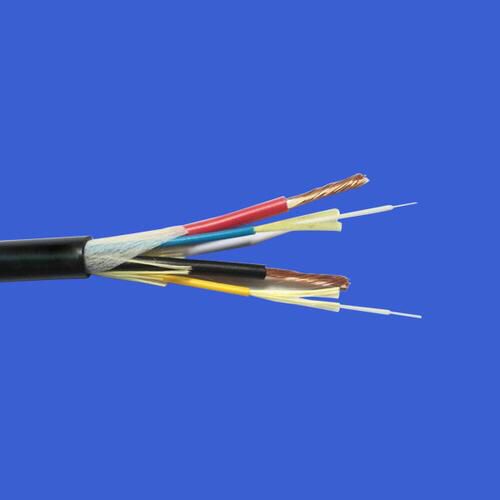By scientifically planning the network architecture and strictly implementing isolation and protection strategies, it can achieve efficient coordination of the internal network, external network and device network, ensuring data security and meeting the diverse demands of the business on the network.

I. Classification and Characteristics of the core Network
Before setting up the network, it is necessary to clarify the core characteristics of the three types of networks to lay the foundation for architecture design:
● Internal network (LAN) : Only for internal authorized users to handle sensitive data and core business, emphasizing security and stability, typically using private IP address segments (such as 192.168.x.x, 10.x.x.x).
● External network (WAN) : Connected to the Internet for external information exchange, it needs to balance access efficiency and security protection, and communicates with the outside through public IP or NAT technology.
● Device Network (IoT) : Connects various terminal devices (such as sensors, cameras, industrial controllers), characterized by a large number of devices, small data transmission volume but high real-time requirements, and mostly uses lightweight communication protocols (such as MQTT, CoAP).
2 Principles of Networking Architecture Design
The collaborative networking of the three types of networks should follow the following principles to balance functionality and security:
1. Isolation and intercommunication coexist: The internal network and the external network, as well as the device network, need to be isolated by technical means to prevent unauthorized access; At the same time, controllable intercommunication is achieved in specific scenarios (such as when device data is uploaded to the internal network server).
2. Layered protection: Deploy differentiated protection measures based on the security requirements of different networks. For the external network, focus on boundary protection; for the internal network, focus on access control; for the device network, focus on terminal identity authentication.
3. Elastic scalability: The architecture needs to support the dynamic growth of the number of devices and the scale of users to avoid network reconfiguration due to expansion.
4. Redundant backup: Redundant devices should be deployed at critical nodes such as gateways and core switches to prevent network outages caused by a single point of failure.
3. Specific networking implementation plan
01 Hardware architecture setup
● Core layer: Deploy high-performance core switches as hubs for internal network data exchange, supporting VLAN (Virtual Local Area Network) division to achieve logical isolation of different departments within the internal network.
● Boundary layer: Connect the internal network to the external network through a firewall, configure access control policies (ACLs), and only open necessary ports (such as 80, 443); Deploy intrusion detection systems (IDS) and load balancing devices simultaneously to enhance the security and stability of external network access.
● Device network access layer: Use industrial switches or iot gateways to connect devices via wired (Ethernet) or wireless (Wi-Fi, LoRa), and the gateways must support protocol conversion (such as converting MQTT to TCP/IP) to enable compatible interaction of device data with the internal network.
02 Network isolation and Intercommunication strategies
● Physical isolation: The device network can be physically separated from the Intranet and extranet through independent switches, and data forwarding is carried out only through dedicated gateways.
● Logical isolation: Use VLAN technology to divide the internal network and device network into different virtual networks, and control cross-VLAN communication through Layer 3 switches or routers; Between the external network and the internal network, NAT technology hides the internal network IP, allowing only active access from the internal network to the external network and restricting active access from the external network.
● Controllable intercommunication: Limited data interaction among three types of networks is achieved through bastion host or DMZ (Demilitarized zone), for example: device network data is filtered by the gateway and only specific format data is allowed to enter the internal network server; When the Intranet needs to access the extranet, it must go through a proxy server and undergo a security audit.
03 Security enhancements
● Internal network: Deploy terminal security management systems, enforce user authentication (such as multi-factor authentication), restrict access to external devices such as USB, and prevent data leakage.
● External network: Enable a VPN (Virtual Private Network) for remote users to securely access the internal network; Configure DDoS protection against cyber attacks.
● Device Network: Assign unique identifiers to devices, use encrypted transport (such as TLS), regularly update device firmware, and patch security vulnerabilities.
4. Operation and Optimization after networking
● Monitoring system: Deploy network monitoring tools to monitor in real time indicators such as bandwidth usage, device online status, and data transmission delay of the three types of networks, and detect anomalies promptly.
● Log Management: Uniformly collect logs from devices such as firewalls, switches, and servers, conduct regular audits, and trace the source of security incidents.
● Bandwidth optimization: Allocate priority bandwidth for internal network core business and real-time data transmission of device networks based on business requirements to prevent high-traffic external network applications (such as downloads) from occupying critical resources.
● Regular practice: Simulate network failures (such as gateway failure, virus intrusion), test the emergency response mechanism, and ensure that the network can be restored to normal operation quickly in the event of a failure.
Conclusions
By scientifically planning the network architecture and strictly implementing isolation and protection strategies, efficient collaboration among the internal network, external network, and device network can be achieved. This not only ensures data security but also meets the diverse network demands of business operations. In actual networking, the plan needs to be adjusted in accordance with specific scenarios (such as enterprise office, industrial control, smart park) to ensure that the network architecture is highly compatible with business goals.






